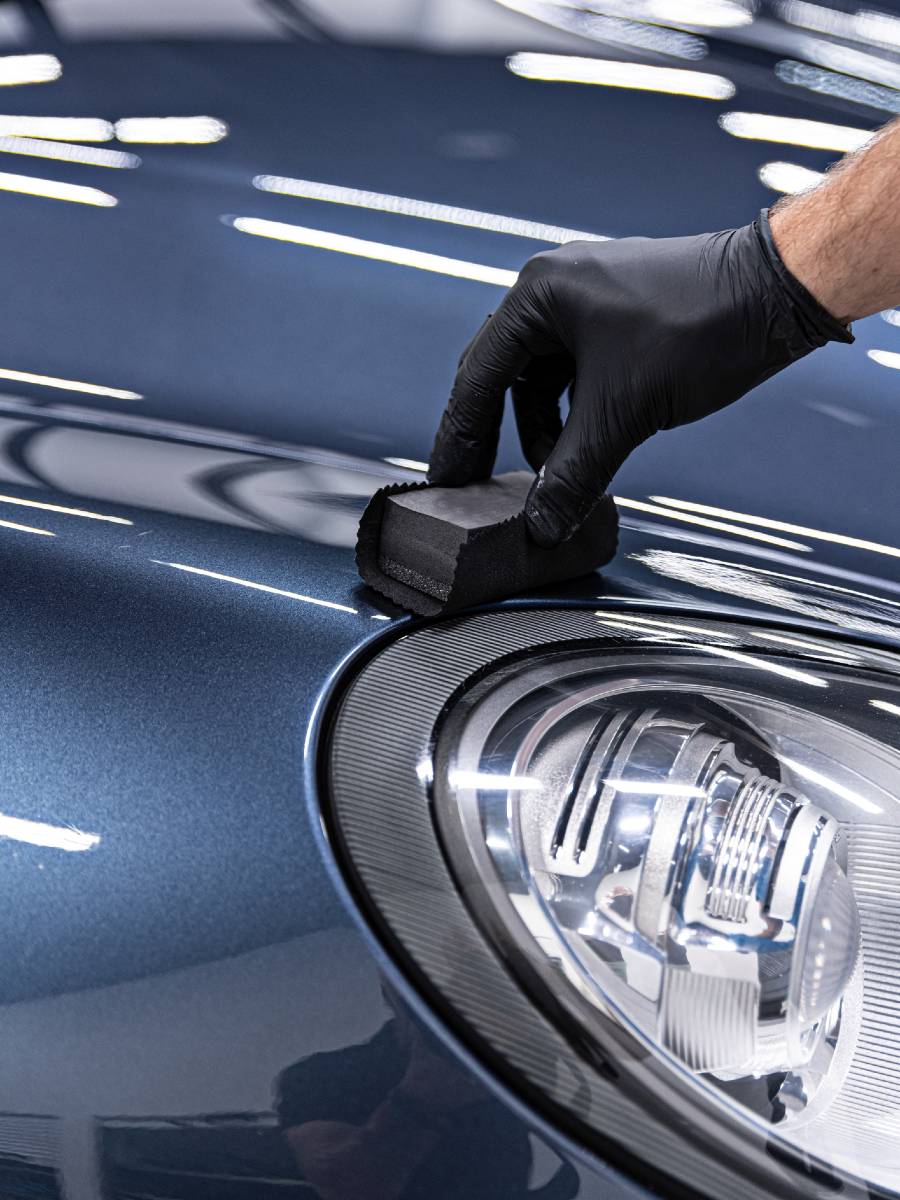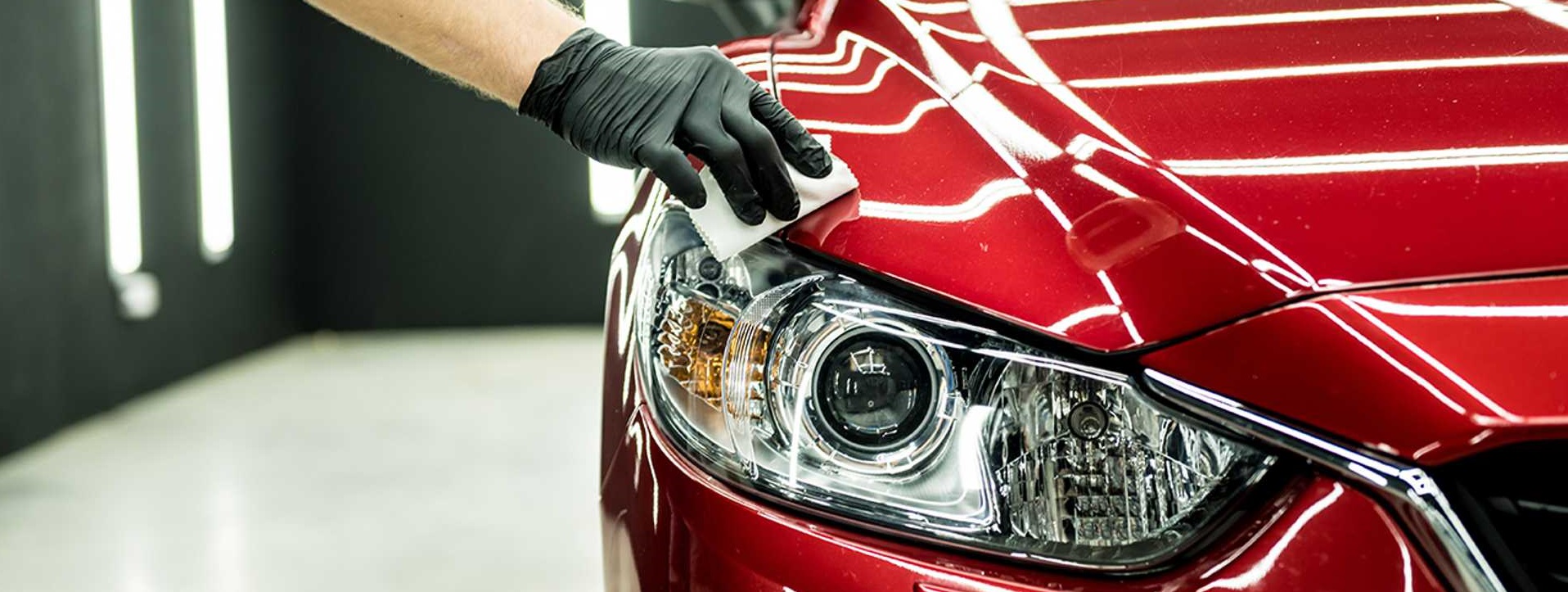Ceramic Coating: The Future of Automotive Surface Protection
Ceramic Coating: The Future of Automotive Surface Protection
Blog Article
Ceramic Layer vs. Conventional Wax: Which Gives Much Better Long-Term Protection?
The discussion between ceramic layers and standard wax for car security has actually gathered considerable focus among automotive lovers and experts alike. While both satisfy of securing paint, their differences in toughness, application, and long-lasting upkeep prices may influence a consumer's choice. Ceramic layers boast remarkable long life and resistance to ecological factors, yet the complexity of their application increases questions about availability and practicality. As we discover these contrasting alternatives, it ends up being vital to take into consideration not only the instant benefits yet likewise the ramifications for vehicle treatment gradually.
Summary of Ceramic Finishing
Ceramic finishing has obtained considerable appeal amongst auto enthusiasts and detailers alike due to its innovative protective high qualities. This innovative modern technology is designed to produce a resilient, hydrophobic guard over an automobile's paint surface, substantially improving its resistance to ecological contaminants such as dust, UV rays, and chemical stains. Unlike standard wax, which gives a short-lived layer of security, ceramic finishes bond at a molecular degree with the paint, using long-lasting durability-- commonly extending past two years with appropriate maintenance.
The application process includes precise prep work of the lorry's surface area, consisting of cleansing and polishing to ensure optimal bond. When used, the covering remedies to develop a robust layer that not just includes depth and gloss to the paint however likewise streamlines maintenance. With its hydrophobic properties, ceramic coating allows water and dirt to move off even more conveniently, lowering the frequency of cleans and decreasing the threat of swirl marks.
Furthermore, ceramic finishings are available in different solutions, permitting customers to choose products tailored to their particular requirements and preferences. Overall, ceramic covering represents a significant innovation in paint security technology, delivering exceptional performance contrasted to standard alternatives.
Overview of Typical Wax
Traditionally considered as a staple in auto care, wax serves as a preferred choice for those seeking a simple method to enhance and shield their car's paint - ceramic coating. Automotive wax commonly makes up all-natural components, such as carnauba, or synthetic compounds, made to create a safety layer externally of the paint. This layer not only boosts the vehicle's gloss and beam but additionally offers an obstacle against environmental contaminants
The application of wax is generally straightforward, making it available for both experts and DIY enthusiasts. When used, wax requires a treating period, after which it sets to develop a safety shell.
However, while wax is efficient for boosting the visual charm of an automobile, it is essential to note that the protection it uses may necessitate a lot more regular reapplication compared to alternative items, such as ceramic finishings. On the whole, typical wax stays a favored option for those focusing on ease of use and immediate visual improvement.
Durability and Longevity Comparison
While both ceramic finishings and typical wax offer safety advantages for automotive paint, their durability and longevity vary significantly. Standard wax, usually made from all-natural carnauba or synthetic polymers, normally provides a safety layer that lasts around 3 to six months. This fairly brief life expectancy necessitates normal reapplication to maintain ideal defense.
In contrast, ceramic finishings are crafted from innovative nanotechnology, developing a covalent bond with the paint surface. This causes a robust, hydrophobic layer that can sustain for two to five years, depending upon the product and ecological problems. The exceptional longevity of ceramic finishes is associated to their chemical structure, which offers improved resistance my review here to scrapes, UV rays, and oxidation.

Defense Versus Environmental Aspects
Safeguarding a car's paint from ecological aspects is essential for keeping its look and value with time. Automobiles are constantly revealed to a selection of elements, consisting of UV rays, bird droppings, tree sap, acid rain, and roadway grime, every one of which can jeopardize the integrity of the paintwork.
Ceramic coverings offer a durable defense versus these environmental assailants. Unlike typical wax, which can break down quickly under UV exposure, ceramic layers create a durable, hydrophobic layer that stands up to the damaging results of sunlight and toxic wastes. This innovative innovation produces a chemical bond with the vehicle's surface area, offering remarkable defense that lasts for years, also in rough conditions.
In comparison, ceramic coatings keep their protective qualities much longer, dramatically lowering the threat of paint damages and guaranteeing that the automobile maintains its visual appeal. As an outcome, ceramic layers are increasingly recognized as the premium option for lasting protection versus ecological elements.
Application and Upkeep Distinctions
The techniques of application and subsequent upkeep for ceramic layers and conventional wax differ substantially, affecting the general individual experience and effectiveness of each product. Ceramic finishes need an even more elaborate application procedure, commonly involving surface area prep work that includes cleaning, decontaminating, and brightening the lorry. Once the surface area is ready, the ceramic layer is used in a regulated setting, commonly requiring professional know-how to guarantee proper curing and bonding to the paint.

While both products enhance lorry appearance, the longer-lasting security offered by ceramic coatings may validate their first investment, in spite of the more requiring application process. On the other hand, typical wax remains a popular selection for those looking for an easier, albeit temporary, option.

Verdict
In final thought, ceramic coverings show significant benefits over conventional wax in terms of sturdiness and environmental security. With a lifespan prolonging two to 5 years and premium resistance to UV rays, dirt, and chemical spots, ceramic coverings provide a much more reliable remedy for lasting car upkeep. The application process might call for professional experience, the resulting expense financial savings and decreased frequency of reapplication highlight the value of ceramic coatings for those seeking optimum automobile security.
The dispute between ceramic coatings and conventional wax for car security has gathered considerable focus among vehicle enthusiasts and professionals Go Here alike. Unlike typical wax, which offers a temporary layer of security, ceramic finishes bond at a molecular level with the paint, offering lasting durability-- typically extending beyond 2 years with proper upkeep.
While both ceramic layers and conventional wax deal safety advantages for vehicle paint, their toughness and longevity differ substantially. For auto enthusiasts seeking long-lasting security, ceramic layers provide a compelling advantage over typical wax items.
In conclusion, ceramic finishings demonstrate substantial benefits over conventional wax in terms of toughness and ecological defense.
Report this page